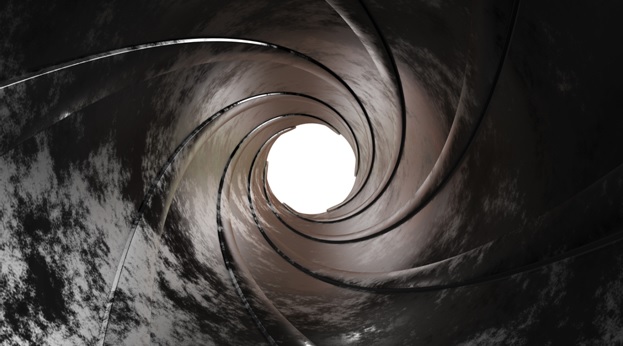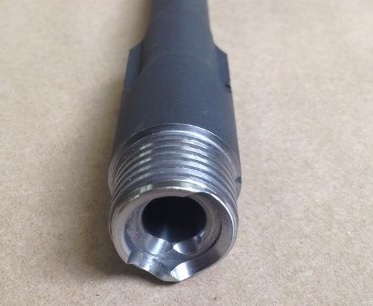M14 Barrels: How to Inspect One, Problems, and More
Nov 14th 2023
The M14 may just be America’s most hated rifle. It was only officially in service for about 7 years, and during that time complaints ran thick.
There were problems with the weight, handling, and brittle receivers due to inauspicious metallurgy. It’s even said that the rifle’s full-auto fire function was effectively unusable because it was too hard to control the rifle.
On that note, most of the issues associated with the M14 were not associated with the barrel, but that is still a vital part, and, if you are trying to accurize an M14, arguably the most important part.
So let’s take a look at how you can inspect a used M14 barrel for issues and what, if anything, can be done about them.
Inspecting a Used M14 Barrel
First produced in 1959, the M14 is getting up there in age. This means if you are inspecting a used one, and don’t know when it was manufactured, you could be handling a gun that is over 60 years old and which has seen thousands of rounds of ammunition.
So let’s talk about some of these issues, how you can detect them, and what you can do about them.
Problems: Shoot-Out
Shoot-out is a condition that affects all rifled barrels in some capacity, although many chamberings are more suspect to it than others.
It occurs when, over time, the bullets passing through the bore wear away some of the lands of the bore’s rifling. Effectively, this erodes the rifling and compromises accuracy.
Chamber pressure and bullet speed are the primary determinants of how fast shoot-out, also known as burn-out, will occur. The higher the chamber pressure and bullet speed, the faster it occurs.
This makes high-speed cartridges like .220 Swift a big culprit. Fortunately, the M14 was chambered in 7.62 NATO, which produces relatively low velocities and chamber pressures, around 2,600 to 2,000 FPS and 60,000 PSI, respectively.
Barrel burnout is not a common issue with rifles chambered in 7.62 NATO, but it absolutely still happens and you can expect to start noticing the effects (accuracy wandering about at 50 yards or more) after 6,000 to 10,000 rounds or so.
That’s a lot of rounds for your average civilian hunting rifle, but not a lot for a service rifle that may actually have been carried by a soldier, so it’s very reasonable that an old M14 barrel might be shot-out.
Unfortunately, you cannot determine shoot-out with a visual inspection alone. You will need either a borescope or the luxury of testing the barrel at the range.
The primary symptom of barrel shoot-out is a rifle that produces inconsistent groups at intermediate ranges and which is flat inaccurate at longer distances.
With the help of a borescope you can see: barrel rifling wear starting at or just beyond the chamber. When this occurs, accuracy suffers, and the only solution is to replace the affected barrel with a new one.
Problems: Fouling, Pitting and Corrosion
This is the most straightforward thing to check for in a used M14 barrel and you can see the effects of (powder) fouling with the naked eye.
The image below is only a concept, but it illustrates the basic issue. A clean M14 barrel should not have the clouded, dark areas and streaks visible in the image. A pristine barrel will have a shiny bore that glows when you shine a light down it, with no dark areas.

Simply remove the barrel from the rifle, point it towards a light source, and look down it from the breech. Powder fouling looks like ragged black streaks against the bore’s interior.
Ammunition produced before 1954 (before the M14’s time) as well as some 7.62 ammo that was produced internationally, is likely to have used corrosive primers. This makes the presence of fouling especially concerning because underneath it there may be rust and pitting.
The first way to check for corrosion and pitting is to clean the bore thoroughly, and then look at a light. If the barrel is still in good shape it will look shiny and spotless; if dark areas remain, these likely signify the presence of rust and pitting.
Corrosion on the interior of a barrel is no small matter and if it is there, it’s best not to buy the barrel in the first place. If you already own the gun, bring it to a gunsmith to assess the condition of the bore before firing the rifle.
Lead and copper fouling are another issue entirely and to see if these are present you will need the help of a borescope. Lead fouling will look like small lumps next to the rifling’s lands, and copper fouling will appear as bluish streaks. Both will need to be cleaned out to restore accuracy.
Problems: Bends
Another issue you may come across in used M14 barrels is the presence of a bend. These are service rifles and many of them may have had long and rough histories. Dropping a rifle or knocking a barrel can put a bend into it, and surprisingly easily at that.
To check for bends, look through the barrel from the breach. You will see concentric circles in the bore which will be perfectly even and aligned in a straight barrel. In a bent one, they will not be evenly aligned.
The concern here has to do with accuracy more than safety, as often a very minor bend will not compromise the rifle’s functionality, but regardless of that, a bent barrel will rarely if even produce accurate results.
That is something only a gunsmith may be able to rectify for you.
Problems: Barrel Bulges
The presence of a bulge in an M14 barrel is a cause for grave concern and you should not buy a barrel that has one.
Typically, bulges occur when a rifle is fired when there is an obstruction in the bore. This creates a region of extreme pressure and stress that can cause a catastrophic failure of the barrel.
If the barrel does not explode, often a bulge will be left behind. This bulge is a weak point that is subject to explosive failure if the weapon is fired again.
Detecting a bulge can prove challenging. It may present itself as a dark circle within the bore or a shadow on one side of the rifling. In any case, if you suspect a bulge, do not buy the barrel or, if you already own it, take it to a gunsmith and have them investigate further.
At any rate, an M14 barrel (or any barrel) with a bulge should not be fired.
Scratch That, Get a New M14 Barrel

These are all of our top tips for detecting potential issues with used M14 barrels, but there is an easier way to find a replacement barrel for your M14.
It’s to get a new M14 barrel, and we have them. These 22” .308 M14 barrels are brand new and made by one of the best barrel manufacturers in the country.
If your barrel’s worse for wear and you need a new one, don’t gamble on used parts when you can drop in a pristine barrel and call it a day.
If you have any questions about our new or used gun parts give us a call and let us know how we can help.

